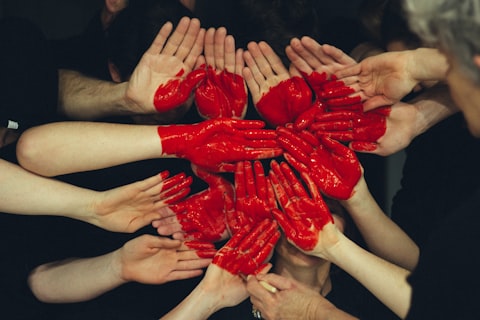Exploring Differences in Ideas and Interactions Between People
Keywords
Diversity Communication Styles Conflict Resolution Collaboration Innovation Relationships Cultural Sensitivity Overcoming Barriers
Introduction
Understanding the diversity of ideas and interactions is key to building relationships and effective collaboration.
Figures
Conceptual Overview:
Images


Diversity of Ideas
The variety of cultural perspectives, personal experiences, and educational backgrounds enrich interactions.
Figures
Diversity Breakdown:
Images


Communication Styles
Exploring verbal vs. nonverbal, direct vs. indirect communication, and the importance of listening and feedback.
Figures
Communication Styles Comparison:
Images


Conflict Resolution
Managing differences, seeking common ground, and the role of empathy in resolving conflicts.
Figures
Conflict Resolution Flow:
Images


Collaboration and Innovation
The synergy of diverse ideas leads to creativity and a culture of inclusivity.
Figures
Innovation Cycle:
Images


Impact on Relationships
Building trust and respect, navigating misunderstandings, and the importance of cultural sensitivity.
Figures
Relationship Dynamics:
Images


Overcoming Barriers
The role of open-mindedness, effective communication strategies, and embracing diversity in overcoming barriers.
Figures
Overcoming Barriers Framework:
Images


Conclusion
Valuing diversity and practicing effective communication are vital for fostering an inclusive culture and innovation.
Figures
Conclusion Summary:
Exploring Differences in Ideas and Interactions Between People
Understanding and appreciating the diversity of ideas and interactions among individuals is crucial for fostering meaningful relationships, effective communication, and collaborative problem-solving. In this article, we will delve into the various aspects of differences in ideas and interactions, including the diversity of ideas, communication styles, conflict resolution, collaboration, the impact on relationships, overcoming barriers, and the importance of embracing diversity in our interactions with others.
I. Introduction
Ideas and interactions between people encompass a wide range of perspectives, beliefs, and communication styles that shape how individuals engage with one another. Recognizing and respecting these differences is essential for building strong relationships and promoting effective collaboration.
II. Diversity of Ideas
Cultural Perspectives
Cultural backgrounds influence individuals' ideas, values, and beliefs, contributing to a rich tapestry of diverse perspectives in interactions.
Personal Experiences
Unique life experiences shape individuals' ideas and perceptions, leading to varied viewpoints and approaches to problem-solving and decision-making.
Educational Backgrounds
Educational experiences and knowledge acquisition play a significant role in shaping individuals' ideas, fostering critical thinking skills and intellectual diversity.
III. Communication Styles
Verbal vs. Nonverbal Communication
Differences in communication styles, including verbal and nonverbal cues, impact how ideas are expressed and interpreted in interactions.
Direct vs. Indirect Communication
Cultural norms and personal preferences influence communication styles, with some individuals preferring direct and explicit communication, while others may use more indirect and nuanced approaches.
Listening and Feedback
Effective communication involves active listening, providing constructive feedback, and seeking clarification to ensure mutual understanding and respect in interactions.
IV. Conflict Resolution
Managing Differences
Conflict resolution strategies, such as active listening, compromise, and negotiation, are essential for addressing disagreements and finding mutually agreeable solutions.
Seeking Common Ground
Identifying common goals and values can help bridge differences in ideas and perspectives, fostering collaboration and understanding in interactions.
Empathy and Understanding
Cultivating empathy and understanding towards others' viewpoints and experiences is key to resolving conflicts and building harmonious relationships based on mutual respect.
V. Collaboration and Innovation
Building on Diverse Ideas
Collaboration thrives on diversity of ideas, as individuals bring unique perspectives and insights to problem-solving and innovation.
Creativity in Problem-Solving
Embracing differences in ideas can lead to creative solutions and novel approaches to challenges, encouraging out-of-the-box thinking and experimentation.
Fostering a Culture of Inclusivity
Creating an inclusive environment where diverse ideas are valued and respected fosters a culture of innovation, creativity, and mutual support in collaborative endeavors.
VI. Impact on Relationships
Building Trust and Respect
Respecting differences in ideas and interactions builds trust and respect among individuals, strengthening relationships and fostering a sense of belonging and acceptance.
Navigating Misunderstandings
Misunderstandings can arise from differences in ideas and communication styles, requiring patience, empathy, and effective communication to address and resolve conflicts.
Cultural Sensitivity
Cultural sensitivity and awareness of diverse perspectives are essential for navigating differences in ideas and interactions, promoting cross-cultural understanding and harmony in relationships.
VII. Overcoming Barriers
Open-mindedness
Maintaining an open mind and a willingness to learn from others' perspectives are essential for overcoming barriers and fostering positive interactions based on mutual understanding.
Effective Communication Strategies
Developing effective communication strategies, such as active listening, clear articulation of ideas, and empathy, can help bridge differences and promote constructive dialogue in interactions.
Embracing Diversity
Embracing diversity in ideas and interactions enriches relationships, promotes innovation, and fosters a culture of inclusivity and collaboration that benefits individuals and communities alike.
VIII. Conclusion
Embracing differences in ideas and interactions between people is a cornerstone of building harmonious relationships, fostering collaboration, and promoting innovation. By valuing diverse perspectives, practicing effective communication, and cultivating empathy and understanding, individuals can navigate differences, resolve conflicts, and create a culture of inclusivity and mutual respect in their interactions with others.









